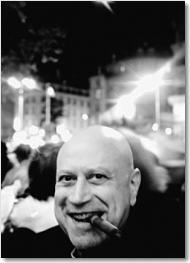Coolness and reserve mark this lady, while not yet a femme fatale, but as one of Freud’s castrating women. –Gilles Néret, 1993

Madame Heymann (c. 1894) – Gustav Klimt
Upon display Medicine was immediately attacked by critics who disagreed with the theme of the powerlessness of medicine in a time when Vienna was leading the world in medical research. The painting was also under the normal attack of pornography which Klimt often faced. A public prosecutor was called in and the issue even reached parliament, the first time that a cultural debate had ever been raised there, but in the end no action was taken. Only the education minister defended him, and when he was elected to be a professor at the academy in 1901 the government refused to ratify it. He was never offered another teaching position. [1]

Medicine (1907) – Gustav Klimt
I’ve been reading Gilles Néret’s 1993 Klimt study for Taschen. Since I am partial towards the human interest factor in art criticism I was a bit disappointed by the lack thereof. Otherwise the study is excellent.
Especially since his work is infused with the tropes of male castration anxiety and the femme fatale, I find it astonishing that little is mentioned on his personal life. Néret’s work reminds me of the shift in an erotic sensibility that Mario Praz describes in Romantic Agony, the shift from female masochism towards male masochism that occurred somewhere in mid-19th century.
In fact searching for Klimt’s personal life only brings up one page:
Though the book touches only lightly on Klimt’s personal life, the scandalous nature of his work, his illegitimate children and the haremlike working conditions of his studio, it provides a detailed portrait of the changes and inconsistencies that defined Vienna at the time, when Secessionist principles of freedom from artistic judgment met simultaneous demands for high standards and the “parallel pursuit of collectivity and individuality.” –quoted from a review of Rainer Metzger’s Gustav Klimt.
Perhaps the 2006 film Klimt starring John Malkovich would provide answers to my questions. This biopic was directed by Raoul Ruiz (Time Regained, 1999) .
Aha! Here is quite a bit on Klimt’s personal life:
He remained a bachelor and was being obviously terrified by the thought of entering into a permanent relationship; his attitude to women was highly ambivalent. For many years, Emilie Flöge (played here by Veronica Ferres), whose sister Helene had married Klimt’s brother Ernst, was his companion and he felt a deep affection for her; nevertheless the relationship is assumed to have been purely platonic. His desire was aroused by the sweet Viennese girls from the suburbs who were neither intelligent nor self-assured, by the many models who were his companions for short periods. The fact that he did not disdain sexual love is evidenced by the great number of his illegitimate children. There are records which establish that he had at least 14 children. It is true that he spent many summers with Emilie Flöge and her family in her house at Kammer on the Attersee, but she remained the woman he always worshipped from afar and only called to his deathbed.
On the Venus vs the Nini:
Néret’s book on the art of Gustav Klimt (1993) differentiates between two types of nudes and calls them Venus and Nini. His argument revolves around artistic pretexts:
In Plato’s “Symposium” one encounters two types of Venus, the celestial and the vulgar. Renoir makes the same distinction: “Naked woman rises either from the sea or from the bed; she is called Venus or Nini, there is no better name for her…” The academic, idealised nude is applauded by society, particularly when a historical message can be discerned, but an everyday naked woman ready for love causes a scandal. Before Klimt, Edouard Manet’s Olympia had aroused hatred and criticism. She likewise was a Nini — like the courtesan on the next street corner — rather than a Venus in the style of Titian’s idealised mistresses, disguised as mythical goddesses. Neither in Manet’s Olympia nor in Klimt’s Vienna was it permissible for such idols to be drawn from life.










